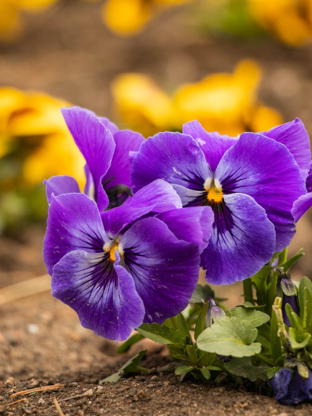Edible Flower Guide
“Stop and smell the flowers” , “Life is the flower for which love is the honey” Flowers can be a display of gratitude, but also can be garnished with your favourite dishes. Edible flowers are a touch of beauty and elegance provided by Earth’s natural resources.
Edible flowers have been used for centuries for health purposes around the world. They can be a perfect addition to incorporate with dishes or steep with teas.
Whether you want to try edible flowers for their medicinal benefits or to spice up your taste palette, it is worth integrating these natural petals into your lifestyle.
Check our Edible Flower Guide to explore their eccentric qualities:
Hibiscus Flower
Hibiscus is a popular edible flower that can be enjoyed as warm tea or thick jam. It is grown in various parts of the world with a subtropical climate. Varying shades of white to red, the flower gives a tart sweet flavour and provides an uplifting taste to dishes. Studies show that hibiscus can enrich health by aiding cholesterol and lowering blood pressure. Try a chilled hibiscus tea as the ideal energy booster!
Lavender
Lavender brings the delicacies and scents of spring – infused with essential oils, syrups and honey. This flower can be found in the Canary Islands and eastern Africa. Known for its calming aroma, lavender is acclaimed to achieve serene and tranquil effects. It can be paired with wide range of foods from savoury to sweet dishes. Try lavender honey ice-cream as a treat for hot summers.
Rose
A symbol of love, the rose originates from Asia in abundant colours and sizes. The rose petal tastes as delightful as its fragrant smell. It can also relieve stress and boost mental health. You can find this popular scent in perfumes and lotions. For consumption, dried rose petals can be incorporated as garnish or used fresh in tea and salads. Explore your floral taste with rose-infused tea or rose flavoured cakes.
Borage
Borage is a vibrant blue, star-shaped flower known for its herbal properties in medicine. It can be used to alleviate sore throats and used for skin illnesses including eczema. Both seed and flower are used for consumption. Borage can be sprinkled as garnish for special dishes. You can find it sitting on top of soups and salads. The flavour can be described as slightly sweet and refreshing. Try borage in yoghurt or sprinkle it on your next salad.
Pansy
Pansy is a fragile, aesthetically-pleasing wildflower grown in Europe and Asia. For ornamental characteristics, you can find vibrant pansies laid on desserts or added for food presentation. Studies suggest pansies have antioxidant properties which can lower complications of heart disease. The faint floral and wintergreen flavours can be an ideal pairing with cakes and pastries.
Chamomile
Chamomile can be recognized as a delightful tea flavour. This herb is adaptable to various environments around the world but is home to Western Europe. Its white petals and yellow centre can be a simple garnish paired with a mellow, flowery taste. Popular for its tea background, chamomile is known for its calming nature and lowers anxiety. Try chamomile tea, it is recommended to enjoy it before bedtime to feel its effects.





